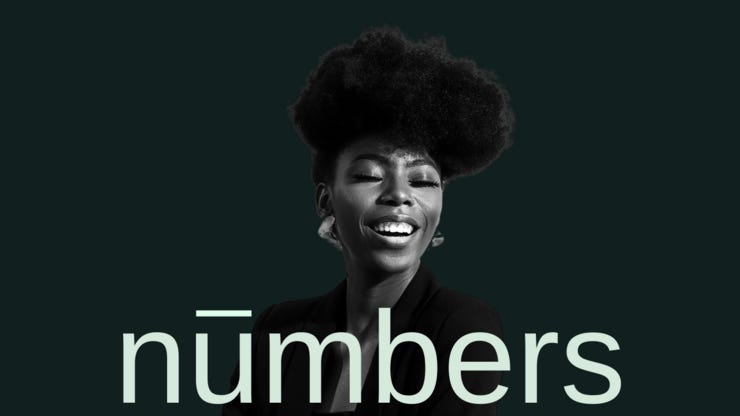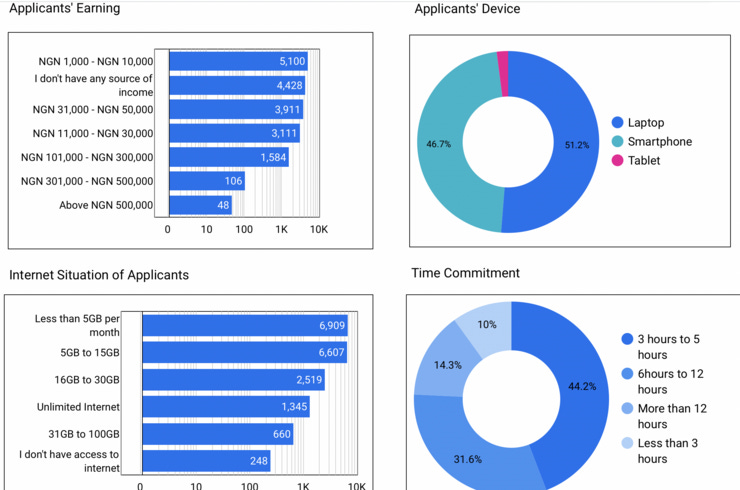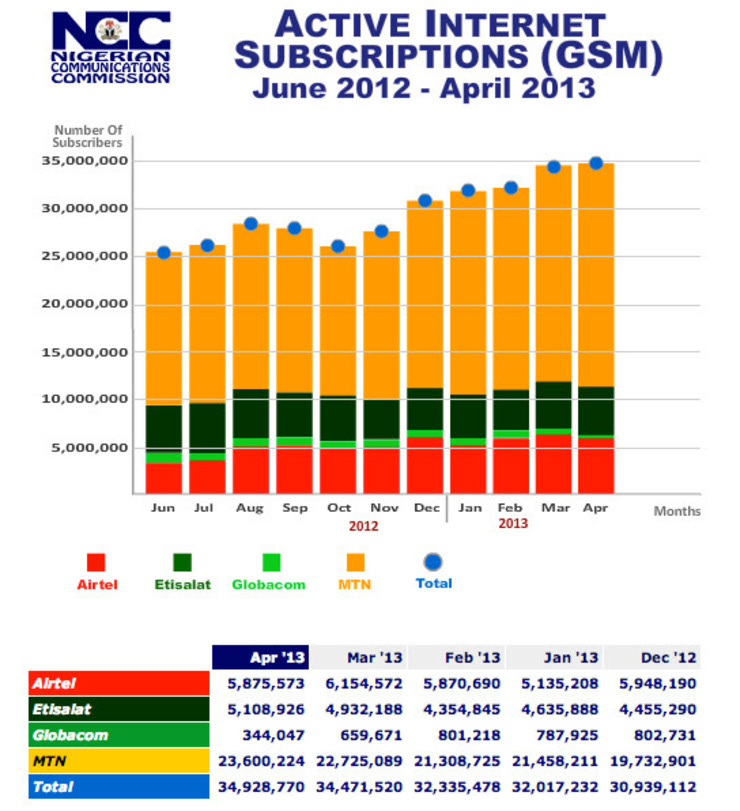How to tell stories with numbers - Issue #16
Dear You,
Taking a second to welcome you and the new 60 subscribers who joined this week. Thank you for being here.
I talked to someone recently, and she said, "Blessing, teach me this storytelling thing. It's getting increasingly important, but I am not a wordsmith." She echoed the thoughts and words of many people in the world who believe stories revolve around words.
Last week, I spoke in a Twitter Space where someone asked about storytelling, and I shared how you can explore storytelling with numbers. It seemed like a new/shocking revelation to the listeners. So, it became expedient to write this article, which I first titled "Beyond words, Storytelling with numbers", and then changed my mind to the simple title above.

Storytelling transcends just words. You can tell stories in many ways using words, pictures, sounds, actions, and many other ways I may not have listed, including numbers.
Storytelling is about telling stories, weaving narratives, triggering or creating memories, and holding up a mirror to address or share specific issues. According to Hubspot, Storytelling is the process of using fact and narrative to communicate something to your audience. What better way to present facts than with numbers?
How do you tell story with numbers?
Take a look at the image below based on the data from the applicants of Ingressive for Good's 1000 Women In Design 2022 program and tell me what you see or notice. You can pause and share your findings in the comment section.
You may notice that over 16,500 people earn less than $100 a month (about 50,000 naira or less). What does this mean? Is there a relationship between their earnings and their internet situation? Is there a correlation between their earnings and the amount of time they can commit? Your brain just goes into overdrive, asking questions, postulating, and sometimes we may catch ourselves comparing ourselves with questions like - where do I fall under based on this data? It makes you dig deep, inquire, or feel armed with information. A good story told with numbers sparks conversations and discoveries.
If you are a numbers person, you too can tell stories. Numbers and data can help us tell stories. Your brand's stories do not have to revolve around that of the founder or the staff. It can revolve around the people. The numbers are representations of the people. It reflects a response based on a question they were asked. It also reflects individual preferences, habits, behaviours, and more. This is why data is getting more and more relevant. You can weave stories from data.
Another exercise
Look at the two pictures below from TechNext and Innovation Village, based on the data from NCC (Nigerian Communications Commission). What do you see? What conclusions, assumptions, or stories can you draw from the data in the images?
Great stories are simple, memorable, easy to recant, focused, mostly unexpected, appeal to our deepest emotion, confirm or dispel suspicion, and even trigger your brain to guess what will happen next? They spark curiosity. Numbers can spark curiosity. It gives you a peek into what to double down on, and what to let go off. You define the metrics that are most important to you. It helps you focus or backs you when you are taking risks. As you grow, the kind of data you focus on may evolve.
For example,
As a fashion design company in Nigeria, you don't only have to show us the making of your clothes and the people wearing them. You can launch research on fabrics, and fashion trends, shedding light on the different types of materials people use. You could interview people who sell fabrics and other people who buy - spreading it across luxury fashion designers and tailors in the hinterlands in your location. You may be able to draw lines between the seller's and buyer's perceptions. It always just starts with a question: "Why are these fabrics unavailable in the market? Is it based on demand, or do the sellers control the market?" or a question like "Why are most asoebis Ankara? Is it because of price, availability, or demand?" Launch a survey, and ask 100, 1000 or even 10,000 people. Pay attention to the demography of people answering. Do the people in Lagos have different answers from those in Abuja? Why? Is it a cultural thing?
These are stories: stories about people within numbers.
You can also pay attention to the behaviours of your customers. For example, what is the most purchased item on your list? Why?
Curiosity and discovery
To tell stories with numbers you must first be curious and delve into them with the heart of discovery. My favourite personal quote that I coined is this -
The goal of an experiment is not to be right but to discover. Discovery is the door to many things, many of which we don't expect or cannot phantom?'
What number story has ever stood out for you?
Tell me in the comment section or share the part of this article that stands out for you on Twitter and tag me - @Blessingabeng_.
With Love,
Blessing Abeng.
Ps: I missed posting on Tuesday because I was so tired that I couldn't lift a finger to type. However, we are here now on this beautiful Wednesday with a sweet article and an announcement to inform you that I am piloting
#UnbrandedConversations! I'll be hosting conversations with people from very diverse works of life who make me curious, and will be sharing articles based on those conversations on Substack. You can subscribe below or join me on my Instagram Live today at 7pm WAT as I interview my first guest - Frank Donga, whose real name is Kunle Idowu.
<iframe src="https://blessingabeng.substack.com/embed" width="480" height="320" style="border:1px solid #EEE; background:white;" frameborder="0" scrolling="no"></iframe>





